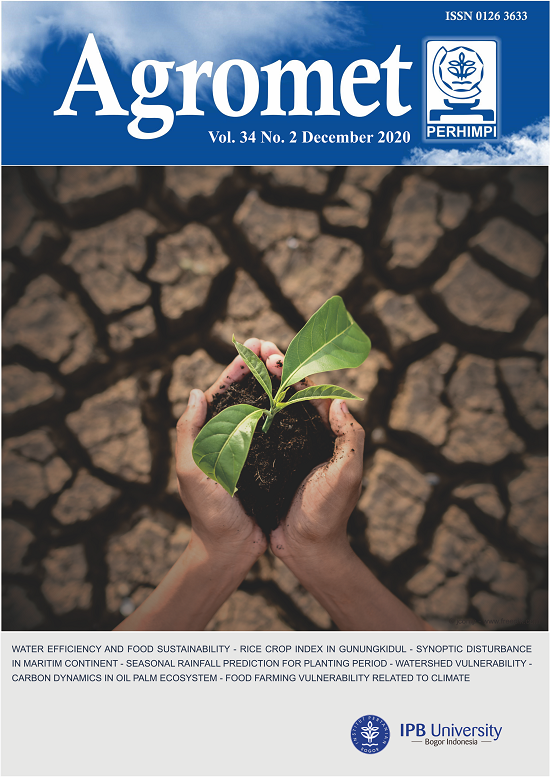Determinant Factors of Food Farming Vulnerability in Banten Province To Support Climate Change Adaptation
Abstract
Food crop is one of the most impacted agricultural sectors by climate related disaster. The negative impacts of climate related disaster could be assessed by its vulnerability level that depends on various indicators including exposure, sensitivity, and adaptive capacity. This paper aims to identify the determinant factors that influence the vulnerability of food farming based on the characteristics of land resources, climate and water, and socio-economic factors at the district level in Banten Province, and to develop recommendations on climate adaptation. Identification of the dominant factors, which most contribute to the level of vulnerability, is one of the main considerations to determine the strategy of adaptation. Our results showed that the main determinant factors varied among districts. The most important factors were Oldeman’s climate type (SEI12), the ratio of the number of extension agents to rice field area (ACI3), and the ratio of the number of farmer groups to rice field area (ACI4). SEI12 deals with the climate, whereas ACI3 and ACI4 are related human resources and institutions. Further, although urban area had high exposure and sensitivity as in rural area, but the adaptive capacity for the urban area was still high. Therefore, the level of vulnerability was reduced in urban, but still high in rural area. More efforts are expected to adapt climate related disaster in rural area.
Authors

This work is licensed under a Creative Commons Attribution-NonCommercial 4.0 International License.

